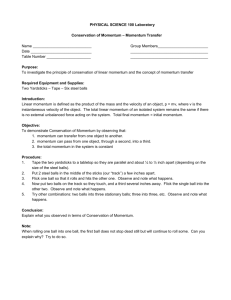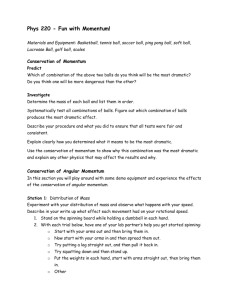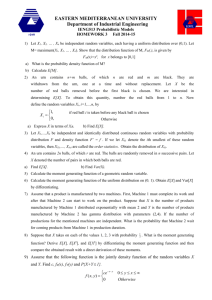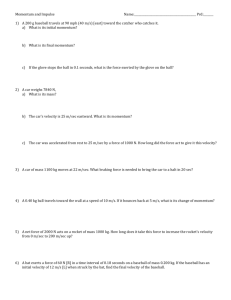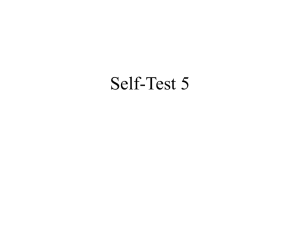Brownian motion Activity 70P: Presentation
advertisement
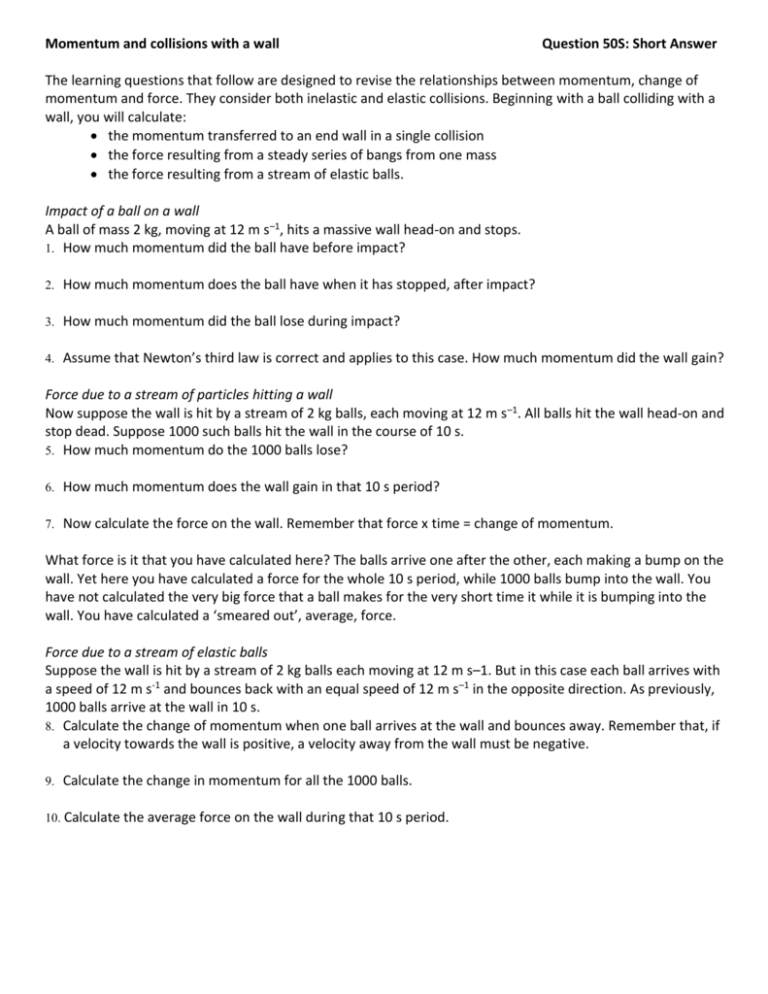
Momentum and collisions with a wall Question 50S: Short Answer The learning questions that follow are designed to revise the relationships between momentum, change of momentum and force. They consider both inelastic and elastic collisions. Beginning with a ball colliding with a wall, you will calculate: the momentum transferred to an end wall in a single collision the force resulting from a steady series of bangs from one mass the force resulting from a stream of elastic balls. Impact of a ball on a wall A ball of mass 2 kg, moving at 12 m s–1, hits a massive wall head-on and stops. 1. How much momentum did the ball have before impact? 2. How much momentum does the ball have when it has stopped, after impact? 3. How much momentum did the ball lose during impact? 4. Assume that Newton’s third law is correct and applies to this case. How much momentum did the wall gain? Force due to a stream of particles hitting a wall Now suppose the wall is hit by a stream of 2 kg balls, each moving at 12 m s –1. All balls hit the wall head-on and stop dead. Suppose 1000 such balls hit the wall in the course of 10 s. 5. How much momentum do the 1000 balls lose? 6. How much momentum does the wall gain in that 10 s period? 7. Now calculate the force on the wall. Remember that force x time = change of momentum. What force is it that you have calculated here? The balls arrive one after the other, each making a bump on the wall. Yet here you have calculated a force for the whole 10 s period, while 1000 balls bump into the wall. You have not calculated the very big force that a ball makes for the very short time it while it is bumping into the wall. You have calculated a ‘smeared out’, average, force. Force due to a stream of elastic balls Suppose the wall is hit by a stream of 2 kg balls each moving at 12 m s–1. But in this case each ball arrives with a speed of 12 m s-1 and bounces back with an equal speed of 12 m s–1 in the opposite direction. As previously, 1000 balls arrive at the wall in 10 s. 8. Calculate the change of momentum when one ball arrives at the wall and bounces away. Remember that, if a velocity towards the wall is positive, a velocity away from the wall must be negative. 9. Calculate the change in momentum for all the 1000 balls. 10. Calculate the average force on the wall during that 10 s period.

